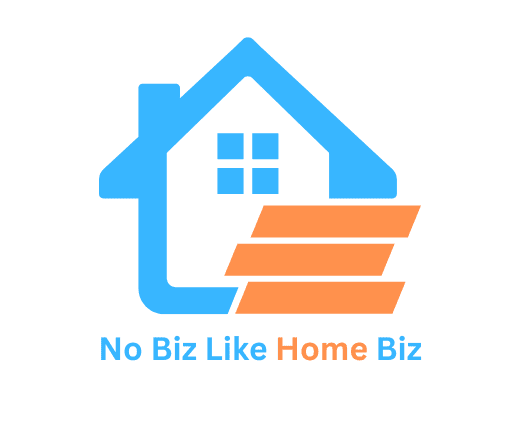6-figure Seller Explains to Beginners How to Sell On Amazon
Are you a beginner who wants to learn how to sell on Amazon? Do you dream of becoming a successful seller and earning six figures through the platform?
Selling on Amazon can be a lucrative business, but it can also be challenging, overwhelming, and high risk business for beginners. With so many products and sellers on the platform, how do you stand out and make your mark? That’s where my expertise comes in.
I, a six-figure Amazon seller, have the experience and knowledge to guide you through the process of selling on Amazon. I know the ins and outs of the platform, from finding the right product to optimizing your listing, automating business processes with the right software tools, and driving sales. With my help, you can achieve your goal of becoming a successful Amazon seller.
If you’re ready to take the first step towards becoming a successful Amazon seller, read on as I share tips and strategies for selling on the platform. From setting up your account to choosing the right products and optimizing your listings, you’ll learn everything you need to know to start your journey towards six-figure success on Amazon.
What is AMAZON FBA?
If you’re new to selling products on Amazon, you may have heard of something called Amazon FBA. Essentially, Amazon FBA, or Fulfillment by Amazon, is a service that allows sellers to store their products in Amazon’s fulfillment centers. When a customer places an order, Amazon will handle the packing, shipping, returns, and customer service on the seller’s behalf.
In a nutshell, to use Amazon FBA, you first need to create a seller account on Amazon. Then, you can create product listings and choose to enroll them in the FBA program. You will need to send your products to an Amazon fulfillment center, where they will be stored until a customer orders them.
Once a customer places an order, Amazon will pick, pack, and ship the product to the customer. They will also handle any customer service inquiries related to the fulfillment of the order. In exchange for these services, Amazon charges fees based on the size and weight of the products, as well as the time they are stored in the fulfillment centers.
Overall, Amazon FBA can be a great way for sellers to simplify their fulfillment process and scale their business on Amazon. It can also provide customers with a reliable and efficient shopping experience, as Amazon’s expertise in logistics and customer service can ensure that orders are fulfilled quickly and accurately.
Amazon offers several different business models besides Amazon FBA which are worth taking a look at.
Reasons You Need to Know to start with Amazon FBA.
If you’re considering selling products on Amazon, it’s important to understand the benefits of using Amazon FBA (Fulfillment by Amazon) as your fulfillment method. Here are some reasons why you should consider using Amazon FBA:
- Access to Prime customers: Amazon Prime members are a highly sought-after demographic, and using FBA allows your products to be eligible for Prime shipping. From my experience this helps increase your sales dramatically and visibility on Amazon.
- Simplified fulfillment: With Amazon FBA, Amazon handles the packing, shipping, and customer service for your orders. This means you can focus on sourcing and selling products, rather than worrying about the logistics of fulfillment.
- Better customer service: Amazon is known for its customer-centric approach, and using FBA can help ensure that your customers receive prompt and reliable service. Amazon handles customer inquiries and returns on your behalf, making the process smoother for everyone involved.
- Multi-channel fulfillment: In addition to fulfilling orders on Amazon, you can also use FBA to fulfill orders from other sales channels, such as your website, Shopify, Facebook page, or other marketplaces. This can help streamline your fulfillment process and save you time and money.
- Increased credibility: Using Amazon FBA can help increase your credibility as a seller, as customers may be more likely to trust products that are fulfilled by Amazon. This can help improve your sales and overall reputation on Amazon.
Overall, using Amazon FBA is a great way to start fast, since you can focus on your physical products and business.
If you want to be even faster at starting your Amazon FBA business, then I recommend highly buying an existing business to skip the market research phase. This eliminates the risk that your product is not getting sold enough.
Step-by-Step Instructions to getting started Amazon FBA
At the heart of successful Amazon selling is a clear and effective process. As an experienced Amazon seller, I’ve developed a unique process that has helped me achieve great success on the platform.
My process is focused on sourcing the correct products, optimizing product listings, leveraging Amazon’s tools and features, and providing exceptional customer service.
If you’re looking to achieve success as an Amazon seller, I’d like to share my process with you. In this tutorial, I’ll provide a step-by-step guide to get started. By following this tutorial, you’ll be able to create a strong foundation for your Amazon business and increase your chances of success on the platform. So, let’s get started!
- Choose Golddigger or Brand-Building Strategy
When it comes to selling products on Amazon, there are generally two strategies that sellers can follow: gold-digger or brand-building.
The gold-digger strategy is focused solely on generating high cash flow, regardless of the product categories being sold. This strategy involves identifying products with high demand and low competition, and then optimizing listings and pricing to maximize sales and profits.
For example, your product portfolio could look like Hairdryer, Fitness mattress, Luxury Pen, and massage oil.
On the other hand, the brand-building strategy is focused on building a strong and valuable brand on Amazon, it’s more the long-term approach. This strategy involves identifying a specific product category or niche and then selling related products within that category. By doing so, sellers can create a loyal customer base and differentiate themselves from other sellers on Amazon.
For example, if you want to build a brand around Fitness then your products could look like Fitness mattresses, Shaker bottles, Fitness shoes, etc and you can extend it off-amazon with Fitness Consulting, Fitness apps, etc.
The decision of which strategy to follow ultimately depends on your goals and priorities. If generating high cash flow quickly is the primary goal, then the gold-digger strategy may be more appropriate. I know many sellers who got more than 6 figures with this strategy.
However, if the seller is looking to build a long-term, valuable brand and aim for 7 and higher figures, then the brand-building strategy is a better fit.
Regardless of which strategy is chosen, it’s important to focus on optimizing listings, providing excellent customer service, and constantly analyzing and adjusting strategies to stay competitive on Amazon.
- Find your first product
Brainstorm product ideas that follow these requirements:
- The product fits into the parcel dimensions of ≤ 45 x 34 x 26 cm
- The lighter the product is the better – the higher the profit margin for you. (see the screenshot below)
- A robust product that is not easy to break nor has many moving parts. A good example is a Yoga mattress a bad example is a digital Watch.
Source: https://sell.amazon.com.au/pricing#fulfillment-fees
- Analyze demand and competition
It’s crucial to choose a product that can be sold but still has no optimized competition.
Note: On Amazon, it’s possible to out beat an unoptimized Listing of a big brand like Nike with an optimized Listing from us!
I have invested in the Software JungleScout because its a way faster and more accurate for analyzing the sales of existing products and the search volume.
You can use the browser extension or the dashboard to see for Amazon Search Keywords the search results with an estimated revenue, review, and total sales.
I want to mention also a free approach to get somehow this data: On Amazon, you can understand how many times certain products are sold by using the Best Sellers Rank (BSR) and sales estimates.
- Best Sellers Rank (BSR): The BSR is an indicator of how well a product is selling on Amazon. The lower the BSR, the more popular and higher-selling the product is. You can find the BSR for a product by scrolling down to the “Product information” section on the product detail page.
- Sales Estimates: While Amazon does not provide exact sales data for individual products, you can estimate a product’s sales based on its BSR. But you need to have a reference for instance your Hairdyrer is BSR 600 and is sold 15 times a day then you can estimate another BSR like 250 for the same category.
By using the BSR and sales estimates, you can get a general idea of how many times certain products are sold on Amazon.
I recommend for the start to invest 1 month in JoungleScout or a similar paid software because it helps you to choose a profitable product.
- Find a supplier for your product
Finding a supplier for your product is the next important step:
- Identify potential suppliers: You can find potential suppliers by searching online marketplaces such as Alibaba or Global Sources. May you know any local suppliers? In my case, I found my suppliers on Alibaba and manufactured my products in China.
- Evaluate potential suppliers: Once you have identified potential suppliers, evaluate them based on factors such as pricing, quality, lead time, and MOQ (minimum order quantity). You can ask for samples, usually, they charge the shipping costs but they subtract these costs later if you choose them. I recommend ordering a sample product from at least 3 suppliers. Also, order the 3 top-selling products from your amazon competitor to compare them all.
- Negotiate and finalize the agreement: Once you have selected a supplier, negotiate terms such as pricing, payment, and delivery. Be sure to clearly define the scope of the project and have a written agreement in place.
- Manage the relationship: Once the agreement is in place, it’s important to manage the relationship with your supplier. This includes communicating regularly, monitoring production, and resolving any issues that may arise.
Overall, finding a reliable supplier is crucial to the success of your Amazon FBA business. By conducting thorough research and establishing a strong relationship with your supplier, you can ensure the quality and consistency of your products.
- Send your products to the Amazon Warehouse
As soon as your products are produced in China you can send them either:
- To your home to validate on your own the quality of all units.
- Send it to an external Agency in China to make the quality assurance.
- I got my QA Agency in China which was excellent because they checked each 5th part for damage and reported defects back to the supplier and me. Afterward, they shipped it to Amazon.
- Send it directly to the Amazon Warehouse where you risk that one of your customers gets a damaged product.
- Setup your Listing
Creating a successful Amazon FBA listing requires attention to several important points, including:
- Product Title: Use a descriptive and concise title that accurately represents your product and includes relevant keywords.
- Product Images: Use high-quality images that show your product from multiple angles, better with some smiling models. You can find high-priced photographers specialled for “Amazon Listings” online but I recommend for the best price-value go to your local photo shop.
- Bullet List: Use the 5 bullet lists with icons to highlight the biggest benefits of your product.
- Product Description: Write a detailed description that highlights the features and benefits of your product.
- Keywords: Include relevant keywords in your product title, description, and backend search terms to improve your visibility in Amazon search results.
- Pricing: Set competitive pricing that reflects the value of your product and the prices of your competitors.
- No reviews, no sales
Reviews are critical to the success of your Amazon FBA business. Positive reviews can increase your visibility, attract more customers, and ultimately drive sales. Negative reviews, on the other hand, can hurt your reputation and lead to fewer sales.
The problem is to get your first 1-10 reviews. Afterward, they will come automatically from your sales. Therefore I recommend boosting reviews from day 1 as fast as possible to have 10 reviews in place:
- Get an honest review from 1-2 friends (not more since Amazon could detect them)
- Get into Facebook product review groups and gift your product to users who want to review it and give an honest review. (Asking for a review in exchange for a service or dollars is forbidden by Amazon!)
- Use agencies that organize you with some honest reviews.
Key Considerations For Successfully rank organically on Amazon page 1
Here are some additional key insights to keep in mind when selling on Amazon FBA:
- Competition: Before selecting a product to sell, research the competition and consider the level of competition in your chosen niche by looking at the reviews and sales of the products on page 1. Launch products only where you can make at least 1 thing better, to stand out with a unique selling point.
- PPC Advertising: Consider using Amazon’s Pay-Pay-Click advertising platform to drive traffic to your listing and increase visibility in search results. I recommend a very aggressive campaign by Not making a profit from the PPC sales because also these sales will increase your organic position and may result in more reviews.
By keeping these additional insights in mind, you can improve your chances of success when selling on Amazon FBA.
Taking it to the Next Level: How to automate your process and scale your business
Take it to the next level by automating your process and scaling your business. Here are some tips to help you do just that:
- Utilize automation tools: Keep your Amazon FBA business running smoothly by utilizing automation tools, such as inventory management software, repricing tools, A/B split testing tools, and order management systems, to help streamline your processes and save time.
- Expand your product offerings: Once you’ve established a successful product line, consider expanding your offerings to reach a wider audience, indeed it’s the best way to leverage your sales.
- Outsource tasks: As your business grows, it may become necessary to outsource certain tasks to free up your time and focus on high-level strategy. Consider hiring virtual assistants or other freelancers to handle tasks such as customer service, social media management, and content creation.
By implementing these strategies and taking steps to automate your process and scale your business, you can achieve even greater success with your Amazon FBA business.
Alternatives to Amazon FBA
Before starting, it’s important to consider alternative methods. Here are some of the best alternatives to Amazon FBA:
- Dropshipping: Dropshipping is a popular method of selling products online without having to hold inventory. You’ll list products for sale on your website or online marketplace, and when a customer places an order, you’ll purchase the product from a third-party supplier who will handle the fulfillment and shipping. This method can be less capital-intensive than Amazon FBA and allows for greater flexibility in product selection.
- Affiliate Marketing: If you have a website or social media following, you can earn commissions by promoting other people’s products through affiliate marketing. You’ll earn a percentage of the sale when someone clicks through your affiliate link and makes a purchase. This method can be a great way to monetize your online presence without having to hold inventory or manage fulfillment.
Wrapping Up and My Experience With Amazon FBA
In conclusion, my experience with Amazon FBA has been largely positive. While it can take several months to get started, once you launch your product, it becomes a very passive business that only requires a few hours of weekly maintenance for PPC campaigns and customer service.
However, it is worth noting that Amazon FBA is a capital-intensive business, and launching multiple products at once can be challenging. Therefore, it is important to make careful calculations and consider the potential costs and risks before diving in. There are existing plenty of online business models where you can start for free.
Overall, with the right approach and mindset, Amazon FBA can be a lucrative and rewarding business venture.
About the Author
Patrick Gruber is homeless because
he made his dream of being a digital nomad real.
He started his career as a developer and has created Amazon FBA businesses and invested in cryptocurrency since 2017.
He also started the Cardano Stake Pool back in 2020. Having traveled the world for the past 3 years, you can find him writing about his experiences on his blog where he shares his knowledge about the LIMITLESS of life






